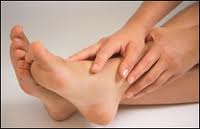Plantar Fasciitis Treatment Options

A frequent and usually painful problem athletes have is plantar fasciitis, triggering heel pain and heel spurs. Lots of people who are usually on their feet all time, discover they require treatment for the discomfort due to plantar fasciitis.
Exactly How Do You Find out If It Is Plantar Fasciitis?
Pain on the base of the heel or foot is one of the very first indicators of plantar fasciitis, and an indication plantar fasciitis treatment is needed. Often this pain is linked with the initial few steps after getting out of bed in the morning or even after relaxing for an prolonged time. Generally, prolonged weight bearing activities or increases in weight can cause an onset of signs or symptoms. A signal for plantar fasciitis treatment is frequently connected with sharp stabbing pain towards the bottom of the heel as well as front of the heel bone. In the majority of instances it is most severe upon standing up and then during periods of inactivity the pain goes away, generally resulting in a dull discomfort.
Just What Will Cause Plantar Fasciitis:
The plantar fascia (or the band connecting in the heel) is yanked on and extended by the over pronation of the foot. Tiny tears result in the swelling, discomfort and inflammation inside the band at the heel. Because the band extends along the arch of the foot, it is another common place that discomfort might be felt as well. Bone spurs can easily be formed over time owing to the pulling and stress of the plantar fascia on the heel bone, leading to a growth. Generally only advanced instances lead to heel spur formation.
The reason that plantar fasciitis causes pain especially in the morning, is that when your at rest, the plantar fascia tightens and contracts. Whenever additional pressure is suddenly put on the foot, the band is forced to rapidly lengthen, resulting in tears, and beginning the process over yet again. After moving for a couple of minutes, the fascia is warmed up, so the pain will usually typically decrease to a dull ache.
Plantar Fasciitis Treatment and Relief
Remedies are available for plantar fasciitis and currently have been confirmed beneficial. Normally, the RICE approach (see below) used to handle sports incidents is employed to help healing. Begin by pursuing the steps outlined below, and including tools like the FlexMassager can certainly speed up rehabilitation.
The RICE treatment:
1. Rest- only stand in the event that you need to, try to let the plantar fascia rest a couple of days and nights
2. Ice - use an ice pack for 5-10 min's on the heel or arch of the foot
3. Stretching - Stretch your plantar fascia by running a large ball beneath your feet. Tension in the band will certainly be released so that it can expand just before it is needed to hold body weight.Moving a ball beneath the foot for a few minutes is a effective technique to release the stress and warm up the plantar fascia, ultimately it can decrease the amount of pain and inflammation in the area over time.
Speak with your health practitioner before starting any treatment program, particularly if the discomfort in the heel does not cease.For much more information, sign up for our subscriber list for brand spanking new articles on managing plantar fasciitis treatment. Furthermore, browse the home page for additional info on the FlexMassager.
